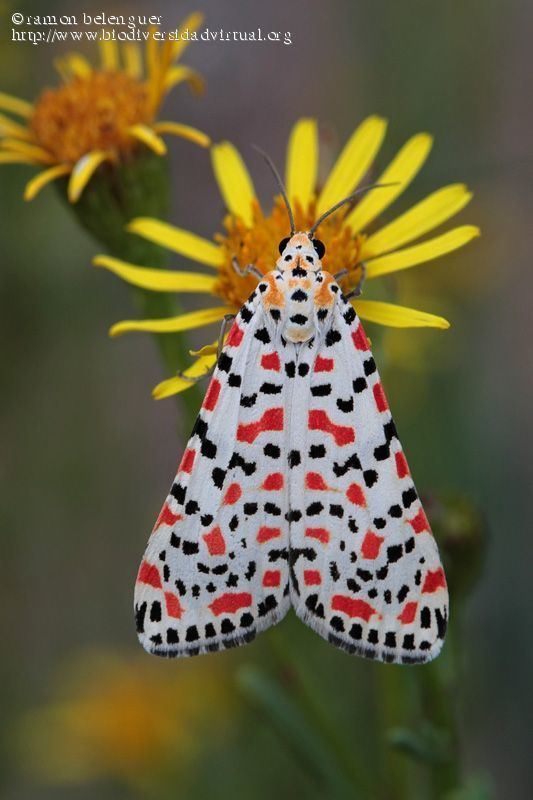Order Butterflies and moths | Scientific name Utetheisa pulchella Rank Species | |
 | ||
Similar Butterflies and moths, Epicallia villica, Coscinia cribraria, Dysgonia, Scarlet tiger moth | ||
Utetheisa pulchella prachtbeer crimson speckled flunkey 010
Utetheisa pulchella, common name crimson-speckled flunkey or crimson-speckled moth, is a moth of the family Erebidae.
Contents
- Utetheisa pulchella prachtbeer crimson speckled flunkey 010
- Moth prachtbeer utetheisa pulchella crimson speckled flunkey
- Subspecies
- Distribution and habitat
- Description
- Biology
- References
Moth prachtbeer utetheisa pulchella crimson speckled flunkey
Subspecies
Subspecies include:
Distribution and habitat
This common widespread species can be found in most of Europe, in the Afrotropical ecozone, in North Africa, in the Near East, in the Nearctic ecozone, in the Oriental ecozone, in the Neotropical ecozone and in Australia. In the United Kingdom it is only a sporadic migrant. These moths inhabit dry open places, meadows, shrublands, grasslands and parks.
Description
The wingspan of Utetheisa pulchella can reach 29–42 mm. The front wings are narrow, white or cream colored with a variable pattern of numerous small black spots located between the larger-sized bright red spots. Sometimes the red spots are merged to transversal bands. The hindwings are wide, white, with an irregular black border along the outer edge and two black markings in the middle of the cell. The head and thorax range from cream color to buff yellow, with the same pattern as the wings. The antennae are long and monofiliform. The abdomen is smooth, with a white background.
Caterpillars are warty, dark brown or grayish, with tufts of grayish hairs, an orange cross-line on each segment, a wide whitish line along the back and two other lateral white lines.
Biology
This species in southern Europe overwinters as a caterpillar. Pupation occurs on the ground near the host plants, usually on fallen leaves and dead vegetation, or pieces of bark and old wood. During mild winters in temperate and typically Mediterranean climates this species hibernates as pupae. Adults of this plurivoltine species usually are present from March to early November in three generations a year, but in the tropics, they develop continuously. They fly both day and night and come to light. The polyphagous larvae feed on a range of herbaceous plants, mainly on forget-me-not (Myosotis), Echium, Borago officinalis, Solanum, Plantago lanceolata and Anchusa species. In the Afrotropical ecozone they mainly feed on Trichodesma zeylanicum, Lithospermum, Heliotropium, Trichodesma and Gossypium' species.
Due to their food, the caterpillars accumulate a large amount of alkaloids, consequently also the moths are toxic and unpalatable to birds. The characteristic coloration of its wings serve as a sign of warning to their predators (aposematism).
